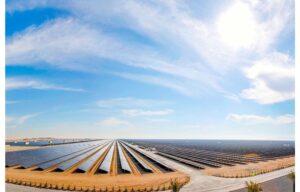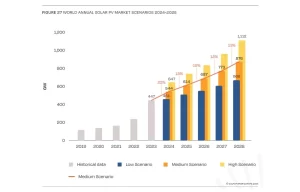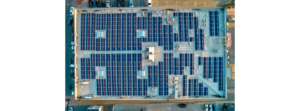- Canadian Solar has announced a new vertically integrated industrial production base project in China
- Under phase I, it targets to bring online 140 GW of new capacity from rods to modules
- It will cost an estimated RMB 18 billion with a target date of 2024 to come online
- Remaining capacity is spread out under 2 more phases, to be negotiated separately later in the future
One of the world’s leading solar PV manufacturers, Canadian Solar is further expanding its manufacturing capacity with well over 100 GW of vertically integrated upstream projects in mind, starting with 140 GW along the value chain including processing materials worth RMB 18 billion ($2.5 billion) under phase I.
In an investment cooperation agreement signed with the Municipal Government of Hohhot in Inner Mongolia, China, NASDAQ listed Canadian Solar (CSIQ) plans to construct a new industrial base, covering the entire industrial chain in Shaerqin Industrial Zone, the management revealed in a special announcement.
A major solar cell and module manufacturer, the Canada headquartered company is now quickly expanding its footprint in the upstream segment as it targets to improve the overall layout of the upstream and downstream of the industrial chain in its portfolio.
Under phase I, it targets:
- 30 GW monocrystalline rod production,
- 80 GW crucible,
- 10 GW monocrystalline slicing capacity,
- 10 GW solar cells,
- 5 GW PV modules and
- 5 GW supporting projects.
All of this is scheduled for commercial operations in 2024.
Construction of its 30 GW monocrystalline silicon rod project is to begin in July 2023 and come online in March 2024. The remaining projects under this phase will enter construction in September 2023 and begin production in September 2024.
Management expects to fund the expansion of this phase with bank financing and equity financing.
There’s more in the pipeline. Phase II will look a:t
- 25 GW monocrystalline puller capacity,
- 5 GW monocrystalline slicing capacity,
- 5 GW solar cells,
- 5 GW module and
- 5 GW supporting products.
It is aimed to be followed by phase III with:
- 25 GW monocrystalline rods,
- 5 GW monocrystalline slicing,
- 5 GW solar cells,
- 120,000 tons industrial silicon and
- 100,000 tons polysilicon capacity.
Phase II and III will be negotiated separately once phase I is implemented. Their realization will also depend on the market demand.
Management says this expansion is in line with the strategic needs of the company’s future production capacity planning.
By 2023-end, Canadian Solar targets to expand its overall cell and module production capacity from 19.8 GW and 32.2 GW in December 2022 to 50 GW each. Ingot and wafer capacities are also planned to grow to 20.4 GW and 35 GW respectively by this year’s end (see Gigantic Expansion Plans From Canadian Solar).
The company has already announced a 5 GW TOPCon module fab in Texas, US (see Texas It Is For Canadian Solar).
TaiyangNews is bringing together experts from the field of solar PV for our Solar Market Overview 2023 webinar to discuss the impact of growing capacity and growing demand for PV on price dynamics, on July 25, 2023. Register free here to join us.





